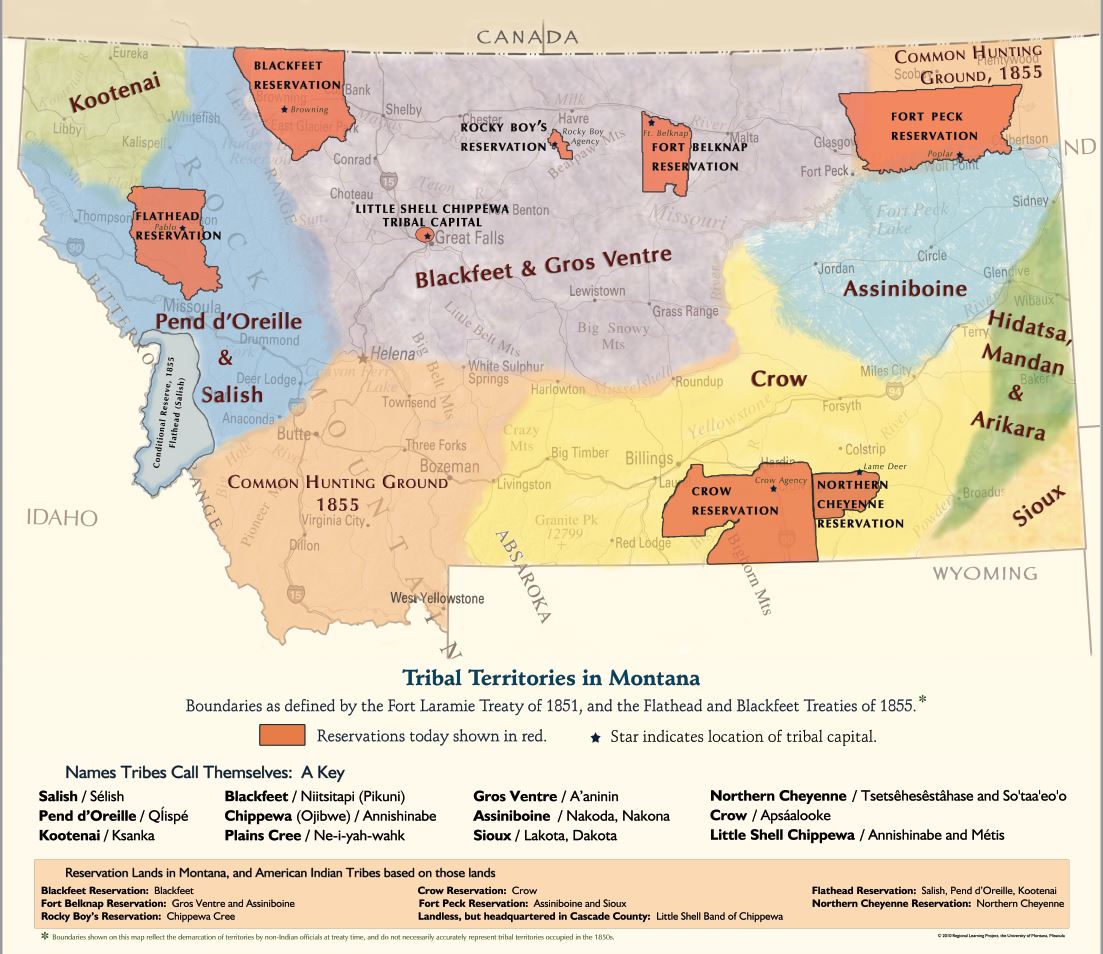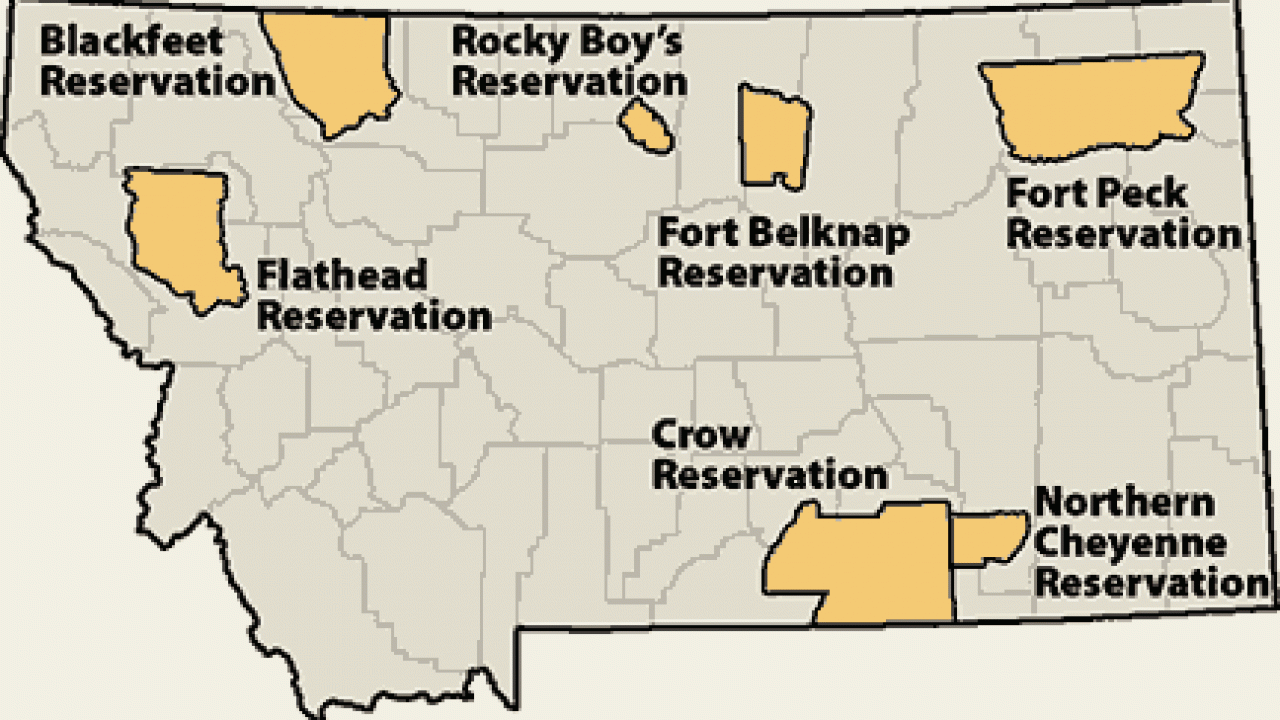Montana’s Tapestry of Tribes: Unveiling the Map of Indian Reservations
Montana’s Tapestry of Tribes: Unveiling the Map of Indian Reservations

Montana, the "Treasure State," boasts a rich and vibrant history woven deeply with its indigenous peoples. Scattered across its sprawling landscape are numerous Indian reservations, each a unique microcosm of culture, tradition, and resilience. Understanding the map of these reservations is not just about geography; it’s about appreciating the diverse tapestry of tribal nations that have called Montana home for millennia.
A Legacy of Resilience
Related Articles: Montana’s Tapestry of Tribes: Unveiling the Map of Indian Reservations
- Uncover the Enigmatic World of Indian Reservations in Colorado
- Unveil the Enigmatic World of Native Indian Tribes in New Mexico
- Unveiling the Vibrant Legacy: Discoveries and Insights into Native American Tribes in Virginia Today
- Arizona’s Indigenous Tapestry: A Journey Through Tribal Lands
- Unveiling the Native American Reservations of Texas: Discoveries and Insights
For centuries, Native American tribes thrived in Montana, their lives intertwined with the land and its bounty. The arrival of European settlers, however, brought a wave of change, leading to forced removals, broken treaties, and the establishment of reservations. These reservations, often carved out of ancestral lands, became a symbol of both hardship and survival. They became spaces where tribes could maintain their cultural identities, traditions, and languages, even amidst the pressures of assimilation.
Navigating the Map: A Journey Through Diverse Nations
Montana’s map of reservations is a testament to the state’s diverse indigenous population. From the Blackfeet Nation in the north, renowned for their skilled horsemen and buffalo hunters, to the Crow Nation in the south, known for their fierce independence and artistic prowess, each reservation tells a distinct story.
The Blackfeet Nation: Nestled in the shadow of the Rocky Mountains, the Blackfeet Nation boasts a rich cultural heritage. Their reservation, encompassing over 1.5 million acres, is home to Glacier National Park, a breathtaking landscape that echoes the spirit of the Blackfeet people.
The Crow Nation: Known for their equestrian skills and their unique language, the Crow Nation has a long and proud history in Montana. Their reservation, located in the south-central part of the state, is a haven for traditional ceremonies, dances, and storytelling.
The Flathead Nation: Situated in the heart of the Mission Valley, the Flathead Nation is home to the Salish, Kootenai, and Pend d’Oreille tribes. Their reservation, encompassing over 1.2 million acres, is a testament to their deep connection to the land, with its lush forests, sparkling lakes, and abundant wildlife.
The Fort Peck Assiniboine and Sioux Tribes: Located in northeastern Montana, the Fort Peck Reservation is a shared homeland for the Assiniboine and Sioux tribes. Their reservation, spanning over 2 million acres, is known for its vast grasslands, fertile farmlands, and rich cultural traditions.
The Northern Cheyenne Tribe: The Northern Cheyenne Tribe, known for their resilience and their strong warrior traditions, have a reservation located in the southeastern corner of Montana. Their reservation, encompassing over 440,000 acres, is a place where they continue to honor their ancestors and their vibrant cultural heritage.

Beyond the Map: Recognizing Tribal Sovereignty
Understanding the map of Montana’s reservations is crucial, but it’s equally important to recognize the sovereignty of each tribe. These reservations are not simply geographical entities; they are self-governing nations with their own legal systems, governments, and cultural practices. Respecting their sovereignty means acknowledging their right to self-determination and their unique contributions to Montana’s history and culture.
The Importance of Collaboration and Understanding
The relationship between Montana’s tribal nations and the state government is a complex one, often marked by historical tensions and ongoing challenges. However, there’s growing recognition of the need for collaboration and understanding. By working together, the state and tribal nations can address issues such as economic development, environmental protection, and education, building a future where all Montanans can thrive.
The Future of Montana’s Reservations

Montana’s Indian reservations are not just geographical spaces; they are vibrant communities with a rich cultural heritage, a deep connection to the land, and a promising future. As the state continues to evolve, it’s essential to recognize the contributions of these tribal nations and to support their efforts to preserve their traditions, languages, and cultures.
Tourism and Cultural Experiences
For visitors to Montana, exploring the state’s Indian reservations offers a unique opportunity to connect with the land’s indigenous heritage. Many reservations offer cultural tours, museums, and art galleries showcasing the artistry and traditions of their people.
The Blackfeet Nation: Visitors can experience the rich culture of the Blackfeet Nation at the Blackfeet Community College, the Museum of the Plains Indian, and the Blackfeet Interpretive Center.
The Crow Nation: The Crow Nation offers a glimpse into their rich history and traditions at the Crow Agency, the Crow Museum, and the Little Big Horn Battlefield National Monument.
The Flathead Nation: The Flathead Nation’s cultural heritage is on display at the Salish Kootenai College, the Confederated Salish and Kootenai Tribes Cultural Center, and the Mission Valley Powwow.
The Fort Peck Assiniboine and Sioux Tribes: The Fort Peck Reservation offers a variety of cultural experiences, including the Fort Peck Cultural Center, the Fort Peck Indian Reservation Museum, and the annual Fort Peck Powwow.
The Northern Cheyenne Tribe: The Northern Cheyenne Tribe’s cultural heritage is celebrated at the Northern Cheyenne Cultural Center, the Northern Cheyenne Museum, and the annual Northern Cheyenne Powwow.
Beyond the Tourist Trail: Connecting with the Community
While visiting reservations, it’s important to remember that these are living communities, not just tourist destinations. Respecting local customs and traditions is crucial, and engaging with the community in a respectful and mindful way can lead to meaningful and enriching experiences.
Exploring Beyond the Map: A Journey of Understanding
The map of Montana’s Indian reservations is just a starting point. It’s a guide to understanding the diverse tapestry of tribes that have shaped the state’s history and culture. By exploring these reservations, learning about their traditions, and engaging with their communities, we can gain a deeper appreciation for the rich legacy of Montana’s indigenous peoples.
FAQs About Montana’s Indian Reservations
1. How many Indian reservations are there in Montana?
Montana is home to seven federally recognized Indian reservations: the Blackfeet Nation, the Crow Nation, the Flathead Nation, the Fort Peck Assiniboine and Sioux Tribes, the Northern Cheyenne Tribe, the Rocky Boy’s Reservation, and the Little Shell Tribe of Chippewa Indians of Montana.
2. What are the largest reservations in Montana?
The largest reservation in Montana is the Fort Peck Reservation, spanning over 2 million acres. The Blackfeet Nation reservation is also quite large, encompassing over 1.5 million acres.
3. What are some of the cultural highlights of Montana’s Indian reservations?
Each reservation has its own unique cultural heritage, but some common highlights include traditional dances, ceremonies, storytelling, and artistic traditions. Many reservations also offer museums, cultural centers, and powwows.
4. How can I learn more about the history and culture of Montana’s Indian reservations?
There are many resources available to learn more about Montana’s Indian reservations, including websites, books, museums, and cultural centers. You can also visit the websites of the individual tribes for information about their history, culture, and current events.
5. How can I visit Montana’s Indian reservations?
Many reservations welcome visitors and offer a variety of cultural experiences. It’s important to check with the individual tribes for information about visitor policies and guidelines. It’s also a good idea to plan your trip in advance and make reservations for lodging and tours.
6. What are some of the economic challenges facing Montana’s Indian reservations?
Montana’s Indian reservations face a number of economic challenges, including high unemployment rates, limited access to education and healthcare, and a lack of infrastructure. These challenges are often rooted in historical injustices, such as the forced removal of tribes from their ancestral lands and the broken treaties that have impacted their sovereignty and economic development.
7. What are some of the current issues facing Montana’s Indian reservations?
Montana’s Indian reservations face a number of current issues, including environmental concerns, healthcare disparities, and economic development challenges. There are also ongoing efforts to address historical injustices and to ensure the protection of tribal sovereignty.
8. How can I support Montana’s Indian reservations?
There are many ways to support Montana’s Indian reservations. You can visit reservations and support local businesses, donate to tribal organizations, and advocate for policies that support the rights and well-being of indigenous peoples. You can also learn more about the issues facing these communities and educate others about their history and culture.
9. What is the future of Montana’s Indian reservations?
The future of Montana’s Indian reservations is bright, but it will require continued efforts to address historical injustices, promote economic development, and protect tribal sovereignty. These communities are resilient and determined to preserve their cultural heritage and to create a better future for their people.
10. What is the best way to learn about the history and culture of Montana’s Indian reservations?
The best way to learn about the history and culture of Montana’s Indian reservations is to visit them, talk to the people who live there, and experience their traditions firsthand. You can also visit museums, cultural centers, and websites to learn more about their history, culture, and current events.
In Conclusion
Montana’s Indian reservations are not just geographical spaces; they are vibrant communities with a rich cultural heritage, a deep connection to the land, and a promising future. By exploring these reservations, learning about their traditions, and engaging with their communities, we can gain a deeper appreciation for the rich legacy of Montana’s indigenous peoples.

Closure
Thus, we hope this article has provided valuable insights into Montana’s Tapestry of Tribes: Unveiling the Map of Indian Reservations. We thank you for taking the time to read this article. See you in our next article!
